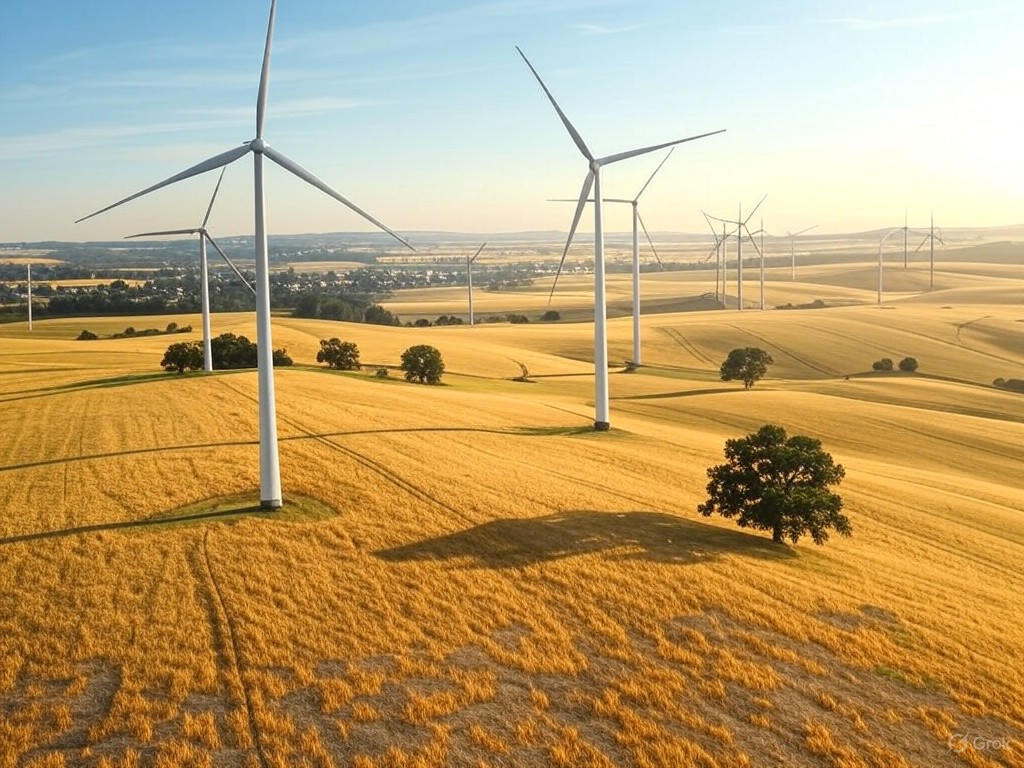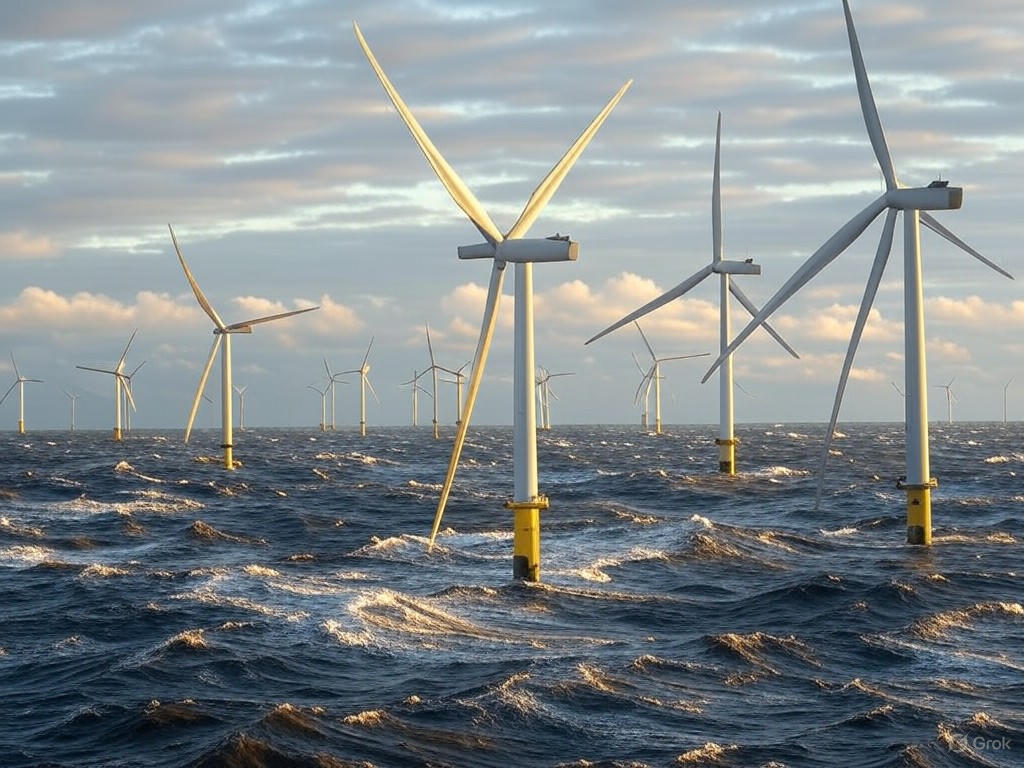Global Renewable Energy Race: Germany’s Wind Power Surge
In the quiet expanse of the German countryside, where ancient winds whisper through fields of rye and oak, one can almost hear the subtle symphony of progress. Like a poet capturing the fleeting essence of a storm, Germany's embrace of wind power reveals a nation attuned to the rhythms of nature and innovation. Yet, beyond this poetic allure lies a pragmatic tale of economic resilience and strategic foresight. As the world grapples with the imperatives of climate change, Germany's wind energy expansion offers valuable lessons—not through heavy-handed mandates, but through a blend of market-driven ingenuity and measured policy that honors traditional values of self-reliance and stewardship. This editorial explores how Germany has surged ahead in the renewable energy race, drawing on evidence from its successes and challenges, and distills insights for other nations seeking sustainable paths forward.
The Winds of Change: Germany's Ascendancy in Renewable Energy
Germany's journey with wind power is a narrative of transformation, rooted in the early 2000s when the nation pivoted toward diversifying its energy mix. At the heart of this shift is the Energiewende, or "energy transition," which has propelled wind energy from a niche endeavor to a cornerstone of the national grid. By 2023, wind power accounted for over 28% of Germany's electricity generation, with offshore and onshore installations expanding rapidly  Vast wind turbines rise against the backdrop of rolling German hills, embodying the nation's blend of technological innovation and natural harmony. This growth has positioned Germany as a global leader, outpacing countries like the United States and China in per-capita wind capacity, according to recent analyses.
Vast wind turbines rise against the backdrop of rolling German hills, embodying the nation's blend of technological innovation and natural harmony. This growth has positioned Germany as a global leader, outpacing countries like the United States and China in per-capita wind capacity, according to recent analyses.
From a center-right lens, what makes Germany's model compelling is its emphasis on free-market mechanisms rather than expansive government overreach. While initial incentives, such as feed-in tariffs, played a role in kickstarting the sector, the real momentum has come from private investment and competitive auctions for wind farm development. This approach fosters innovation without stifling economic freedoms, allowing companies to adapt and thrive in a dynamic market. As The Wall Street Journal notes, Germany's wind sector has attracted billions in private capital, demonstrating how targeted incentives can catalyze growth while leaving room for entrepreneurial spirit to flourish.
Yet, this expansion is not without its complexities. Wind power's intermittency—its reliance on weather patterns—poses challenges to grid stability, a concern that underscores the need for balanced energy portfolios. Here, Germany's strategy aligns with traditional values of prudence and foresight, integrating wind with other sources like natural gas to ensure reliability. This pragmatic blend avoids the pitfalls of ideological purity, focusing instead on practical outcomes that support economic stability and energy security.
Analyzing the Evidence: Economic and Environmental Gains
Delving deeper, the evidence of Germany's wind power success is both quantitative and qualitative, painting a picture of a nation that has harnessed renewable energy to bolster its economy while addressing climate change. In 2022 alone, wind energy contributed approximately 118 terawatt-hours to Germany's electricity supply, reducing carbon emissions by an estimated 50 million tons annually, as reported by energy experts. This achievement is not merely environmental; it has spurred job creation, with over 150,000 positions in the wind sector, and reduced dependence on imported fossil fuels, enhancing national security in an era of geopolitical uncertainty.
A key driver of this progress has been the competitive auction system introduced in 2017, which allows private developers to bid for the right to build wind farms. This market-oriented approach has driven down costs, with the levelized cost of energy from new wind installations dropping by nearly 40% since 2015, according to IEEE Spectrum. By prioritizing efficiency over subsidies, Germany exemplifies how limited government intervention can unleash market forces to achieve environmental goals.  Majestic offshore wind turbines off Germany's North Sea coast, illustrating the scale of innovation that powers a nation toward energy independence.
Majestic offshore wind turbines off Germany's North Sea coast, illustrating the scale of innovation that powers a nation toward energy independence.
However, a balanced view requires acknowledging the hurdles. Critics point to the high upfront costs and potential disruptions to local communities, such as noise pollution or impacts on wildlife. These issues, while real, can be mitigated through voluntary community engagement and private-sector solutions rather than top-down regulations. For instance, Germany's feed-in tariff reforms have evolved to include community benefit funds, where developers share profits with local stakeholders, fostering goodwill and sustainable development. As Bloomberg Green highlights, this model encourages collaboration without imposing burdensome mandates, aligning with center-right principles of individual initiative and local autonomy.
Economically, the ripple effects are profound. Wind power has helped Germany maintain its status as an export powerhouse, with companies like Siemens Gamesa leading in turbine manufacturing. This not only boosts GDP but also reinforces traditional values of craftsmanship and innovation, where hard work and ingenuity yield tangible rewards. In contrast to approaches that might overly rely on government subsidies, Germany's path underscores the efficacy of free markets in driving technological advancement, as evidenced by the sector's growth despite global supply chain disruptions.
Lessons for Other Nations: Embracing Market-Driven Climate Strategies
As other countries chart their courses in the renewable energy race, Germany's experience offers a roadmap grounded in realism and restraint. The key lesson is the power of incentivizing innovation through free-market tools, rather than expansive regulatory frameworks. For the United States, for example, this might mean expanding tax credits for wind projects while streamlining permitting processes to encourage private investment, as suggested in analyses from The Heritage Foundation. Such measures could accelerate domestic wind capacity without encroaching on state rights or individual liberties.
Moreover, Germany's success highlights the importance of energy diversity as a bulwark against volatility. Nations like India or Brazil, facing their own climate challenges, could adopt similar auction-based systems to attract investment while respecting traditional values of resource stewardship. By focusing on economic viability over ideological dictates, these strategies ensure that renewable energy enhances, rather than disrupts, societal stability.
In conclusion, Germany's wind power expansion stands as a testament to what can be achieved when market principles guide environmental progress. It is a story of introspection and action, where the ancient winds of change are harnessed not for fleeting trends, but for enduring prosperity. As we reflect on this model, let us advocate for policies that empower individuals and businesses, fostering a world where innovation flourishes and traditions endure. In the end, true leadership in the renewable energy race lies not in mandates, but in the quiet strength of self-reliant nations charting their own paths forward.

